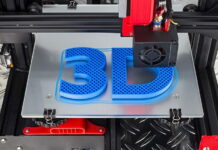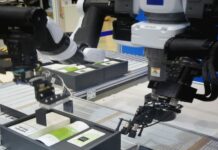At first look, a more mechanised world appears lonesome, invoking images of robots coldly working in sterile workplaces. The future of automation, though, may depend more on cordial connections than on cutting-edge technology.
According to PMMI Business Intelligence’s 2022 report, the Future of Automation in Packaging and Processing, consumer packaged goods companies, or CPGs, are becoming more aware of the advantages of domestic equipment manufacturers and the importance of ongoing relationships for instruction and upkeep.
Shop Globally, But Buy Locally
The pandemic seems to have changed how CPGs see globalisation; businesses are now searching for domestic suppliers who can provide a more secure service.
According to a manager of a food processing company quoted in the study, whenever they can, they acquire equipment that’s built in the US or has a significant presence in the US so that they know that components are available in the US.
Another CPG food business claimed that in the past, buying custom machinery from China and saving 30% on capital expenditure was quite alluring. However, the pandemic’s impact on supply chains, particularly the closure of Shanghai, a major global trade centre and the largest container port in the world, and the Sino-US trade tensions have forced CPGs to question if these cost savings are worthwhile. Lead times of up to 12 to 18 months have prompted CPGs to seek suppliers for parts and equipment that they wouldn’t have previously, especially those local vendors.
One CPG food maker said, anything they are introducing, they strive to make sure that there is availability in the US; there is a lot of equipment in their factory that comes from abroad.
Additionally, manufacturers are now thought to need many vendors for machine parts because of the uncertain lead times, whereas CPGs may have historically relied on one supplier.
Partnerships Aren’t Just Transient Anymore
The pandemic’s impact on markets, along with the supply chain issues and labour constraints that followed, forced CPGs to reevaluate their relationships with OEMs and set new priorities for their machinery investments.
They don’t need someone to come over and pitch them the newest gadget they’ve got, then leave and go on to the next client. They want to buy from someone who will train the staff, said a manager of a major manufacturer of personal care goods.
When creating their offers to businesses, OEMs are gradually taking these issues into account. Labor shortages are increasing the pressure on us as OEMs to not only simplify the equipment but to make it more user- and maintenance-friendly, a mid-sized OEM representative remarked. However, they are now required to perform a lot more manual labour to assist their clients in operating their lines.
Establishing legally bound relationships, for instance through longer-term service contracts, machinery as a service (MaaS), longer warranties, and improved training services, is highly advantageous to both CPGs and OEMs.
Additionally, CPGs are urging OEMs to look at packaging and processing operations as a whole rather than just concentrating on the individual step where their product is used. Due to the lack of top-level talents, CPGs are turning more and more to OEMs for leadership in plant planning and operation.
Closing the Skills Gap via Operator Training and Automation
Since operating automated machinery on a manufacturing line requires ability, a long-term concern is the lack of highly skilled personnel. More than 90% of CPGs want OEMs to improve their training programmes.
One tendency among OEMs has been to provide training through service agreements and ongoing preventative maintenance contracts, where their engineers regularly visit production lines to ensure that machines are performing at peak levels. When engineers are present, they train the production line workers on the job, raising their skill levels and helping them become experts on their equipment.
Additionally, some OEMs are beginning to provide remote solutions. Technologies and developments in training that were primarily imposed on businesses during the pandemic, including remote learning, wearable technology, and augmented reality, are still in use. Despite the fact that the pandemic is no longer a factor, skills gaps mean that OEM support teams are still using these solutions to save on the utilisation of human resources and cut down on their own travel times and expenditures.
One OEM representative said that by allowing augmented reality teaching, remote diagnostics, and remote connection, these new technologies have benefited their organisation with training and support. It will save time and money and improve cooperation if they can respond quickly from 10,000 miles away rather than sending someone there, according to the OEM.
Overcoming Remote Training’s Drawbacks
Although the idea of 10,000 kilometres away live training sounds appealing, remote training has drawbacks. According to the survey, engineers frequently need more time to learn something than they would with in-person instruction.
However, OEMs are aware that, because of their decreased number of experienced technicians, they aren’t going to be capable of supporting all the CPGs they need to without distant learning and support services. A support package that provides a combination of online and in-person training is one potential answer.
This gets rid of some of the anticipated shortcomings of a wholly remote programme, like the impersonal aspect of remote training, inherent communication difficulties, and probable need for additional instructors and training.




























